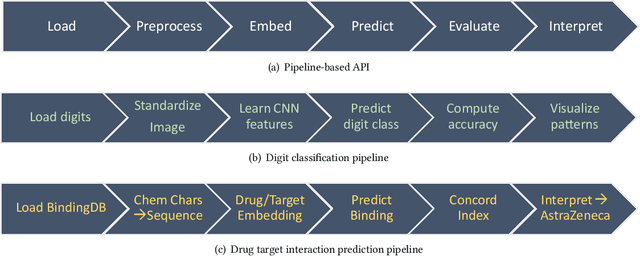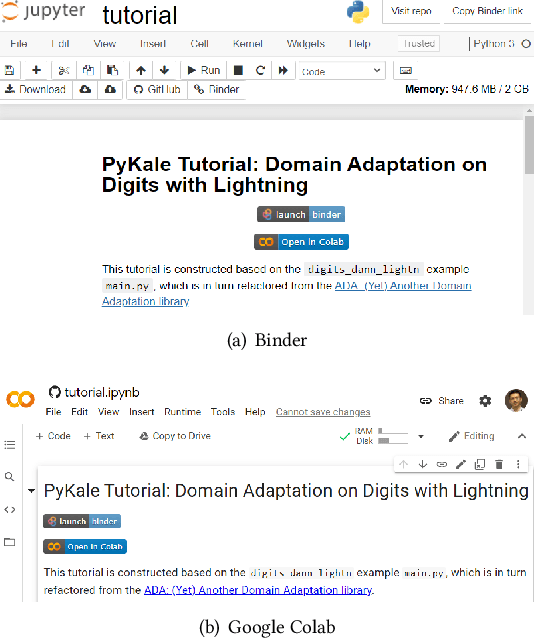Lawrence Schobs
Tensor-based Multimodal Learning for Prediction of Pulmonary Arterial Wedge Pressure from Cardiac MRI
Mar 14, 2023Abstract:Heart failure is a serious and life-threatening condition that can lead to elevated pressure in the left ventricle. Pulmonary Arterial Wedge Pressure (PAWP) is an important surrogate marker indicating high pressure in the left ventricle. PAWP is determined by Right Heart Catheterization (RHC) but it is an invasive procedure. A non-invasive method is useful in quickly identifying high-risk patients from a large population. In this work, we develop a tensor learning-based pipeline for identifying PAWP from multimodal cardiac Magnetic Resonance Imaging (MRI). This pipeline extracts spatial and temporal features from high-dimensional scans. For quality control, we incorporate an epistemic uncertainty-based binning strategy to identify poor-quality training samples. To improve the performance, we learn complementary information by integrating features from multimodal data: cardiac MRI with short-axis and four-chamber views, and Electronic Health Records. The experimental analysis on a large cohort of $1346$ subjects who underwent the RHC procedure for PAWP estimation indicates that the proposed pipeline has a diagnostic value and can produce promising performance with significant improvement over the baseline in clinical practice (i.e., $\Delta$AUC $=0.10$, $\Delta$Accuracy $=0.06$, and $\Delta$MCC $=0.39$). The decision curve analysis further confirms the clinical utility of our method.
Uncertainty Estimation for Heatmap-based Landmark Localization
Mar 04, 2022



Abstract:Automatic anatomical landmark localization has made great strides by leveraging deep learning methods in recent years. The ability to quantify the uncertainty of these predictions is a vital ingredient needed to see these methods adopted in clinical use, where it is imperative that erroneous predictions are caught and corrected. We propose Quantile Binning, a data-driven method to categorise predictions by uncertainty with estimated error bounds. This framework can be applied to any continuous uncertainty measure, allowing straightforward identification of the best subset of predictions with accompanying estimated error bounds. We facilitate easy comparison between uncertainty measures by constructing two evaluation metrics derived from Quantile Binning. We demonstrate this framework by comparing and contrasting three uncertainty measures (a baseline, the current gold standard, and a proposed method combining aspects of the two), across two datasets (one easy, one hard) and two heatmap-based landmark localization model paradigms (U-Net and patch-based). We conclude by illustrating how filtering out gross mispredictions caught in our Quantile Bins significantly improves the proportion of predictions under an acceptable error threshold, and offer recommendations on which uncertainty measure to use and how to use it.
PyKale: Knowledge-Aware Machine Learning from Multiple Sources in Python
Jun 17, 2021


Abstract:Machine learning is a general-purpose technology holding promises for many interdisciplinary research problems. However, significant barriers exist in crossing disciplinary boundaries when most machine learning tools are developed in different areas separately. We present Pykale - a Python library for knowledge-aware machine learning on graphs, images, texts, and videos to enable and accelerate interdisciplinary research. We formulate new green machine learning guidelines based on standard software engineering practices and propose a novel pipeline-based application programming interface (API). PyKale focuses on leveraging knowledge from multiple sources for accurate and interpretable prediction, thus supporting multimodal learning and transfer learning (particularly domain adaptation) with latest deep learning and dimensionality reduction models. We build PyKale on PyTorch and leverage the rich PyTorch ecosystem. Our pipeline-based API design enforces standardization and minimalism, embracing green machine learning concepts via reducing repetitions and redundancy, reusing existing resources, and recycling learning models across areas. We demonstrate its interdisciplinary nature via examples in bioinformatics, knowledge graph, image/video recognition, and medical imaging.
 Add to Chrome
Add to Chrome Add to Firefox
Add to Firefox Add to Edge
Add to Edge